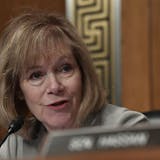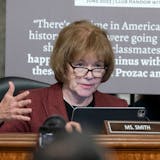Life is full of surprises, and some 100 college presidents think they have stumbled on one. They think there is too much problem drinking on campus -- no surprise there -- and suggest we might solve the problem by changing the drinking age. They don't propose to raise it to 25. They want to lower it to 18.
The group behind the petition they signed, Choose Responsibility, says the current drinking age is a failure. It has "not resulted in significant constructive behavioral change among our students," the statement says, and in fact has spawned "a culture of dangerous, clandestine 'binge-drinking' -- often conducted off-campus."
It's true that in the old days, there was no college culture of clandestine, off-campus binge drinking. It was out in the open, right on the quad. Another difference back then: There was more of it.
At the risk of stating the obvious, that's at least partly because in most states, the drinking age was under 21. Youngsters could buy booze legally, so they did what you would expect. They drank more and got drunk more.
It's bizarre to blame the higher age for today's staggering undergraduates. According to Monitoring the Future, an ongoing research project at the University of Michigan, binge drinking has not risen since 1988, when 21 became the minimum drinking age throughout the country. Among college students and other college-age Americans, the rate is lower today than it was then, and the decline has been even bigger among high-school students.
It's true the progress stalled around 1996. But how can that be blamed on the higher drinking age? By then, it had been the national norm for nearly a decade.
In spite of the law, plenty of 18- to-20-year-olds somehow manage to get wasted on a regular basis. But a law can be helpful without being airtight. This one has curbed not only the use of alcohol among young people, but its dangerous abuse.
Since 1988, according to the National Highway Traffic Safety Administration, drunken-driving deaths have dropped in all age groups. That's due in part to stricter enforcement and changing public attitudes about drinking and driving. But they dropped most among those younger than 21. In that group, the number of alcohol-related fatalities has been cut nearly in half -- even as the number of traffic deaths not related to alcohol has been stable.


